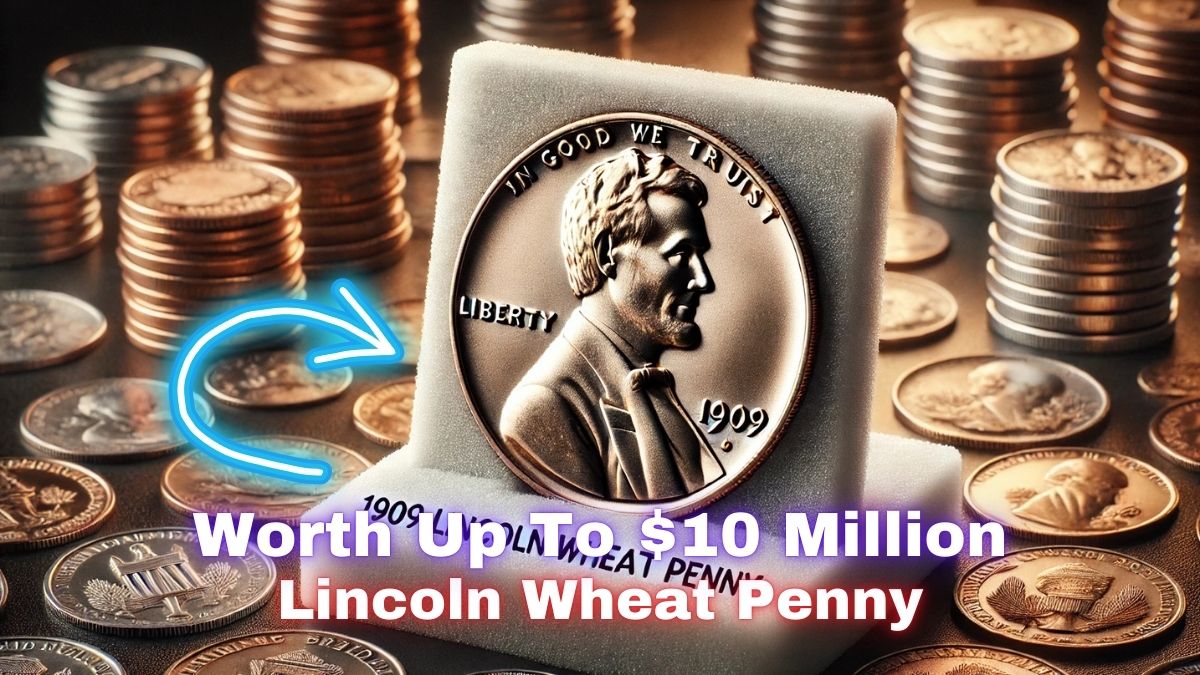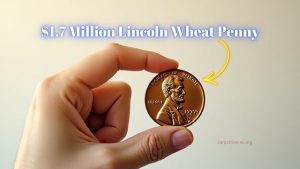The Lincoln Wheat Penny, first minted in 1909 to commemorate President Abraham Lincoln’s 100th birthday, holds a special place in American numismatics.
While many of these pennies are common, certain rare variations have fetched astonishing prices, with some valued at up to $10 million.
This article delves into the history, factors influencing value, and the most coveted Lincoln Wheat Pennies.
Historical Significance of the Lincoln Wheat Penny
The Lincoln Wheat Penny was groundbreaking as the first U.S. coin to feature a real person’s likeness—President Abraham Lincoln.
The obverse displays Lincoln’s profile, while the reverse showcases two wheat stalks, symbolizing the nation’s agricultural heritage. This design was in circulation from 1909 to 1958, marking a significant era in U.S. coinage.
Factors Determining the Value of a Lincoln Wheat Penny
Several elements contribute to a Lincoln Wheat Penny’s value:
- Rarity: Coins with low mintage numbers or unique variations are more valuable.
- Minting Errors: Mistakes like double dies or off-center strikes can increase worth.
- Condition: Pennies in mint state or uncirculated condition are highly prized.
- Historical Significance: Coins from notable years or events hold added value.
The $10 Million Lincoln Wheat Penny
Among the rarest is the 1943 bronze Lincoln Wheat Penny. During World War II, the U.S. Mint switched to zinc-coated steel planchets to conserve copper.
However, a few bronze planchets from 1942 were mistakenly used in 1943, resulting in extremely rare coins. One such penny sold for $504,000, making it one of the most valuable pennies ever.
Identifying Valuable Lincoln Wheat Pennies
To spot a potentially valuable penny:
- Check the Date: Look for key years like 1909-S VDB, 1914-D, and 1943.
- Examine the Mint Mark: ‘S’ indicates San Francisco, ‘D’ denotes Denver, and no mark signifies Philadelphia. Some mint marks are rarer than others.
- Inspect for Errors: Features like a double die or misstrikes can add value.
- Assess the Condition: Coins with minimal wear are more valuable.
Notable Lincoln Wheat Pennies and Their Values
| Year | Mint Mark | Notable Feature | Estimated Value |
|---|---|---|---|
| 1909 | S VDB | Low mintage | Up to $100,000 |
| 1914 | D | Scarcity | Up to $150,000 |
| 1943 | None | Bronze planchet | Up to $504,000 |
| 1955 | None | Double die | Up to $125,000 |
| 1922 | No D | Missing mint mark | Up to $30,000 |
Preserving and Grading Your Lincoln Wheat Penny
If you believe you possess a valuable penny:
- Avoid Cleaning: Cleaning can reduce a coin’s value.
- Store Properly: Use holders to prevent damage.
- Seek Professional Grading: Organizations like the Professional Coin Grading Service (PCGS) can authenticate and grade your coin, providing a reliable valuation.
The Lincoln Wheat Penny is more than just spare change; it represents a piece of American history. While not every penny is worth millions, certain rare specimens can be incredibly valuable.
Collectors and enthusiasts should educate themselves on key features and consult professionals to determine a coin’s true worth.
FAQs
What makes the 1943 bronze Lincoln Wheat Penny so valuable?
Its rarity due to a minting error during WWII, where a few pennies were mistakenly struck on bronze planchets instead of steel.
How can I tell if my Lincoln Wheat Penny is valuable?
Check the date, mint mark, look for minting errors, and assess its condition. Consulting a professional grader is advisable.
Where can I sell a valuable Lincoln Wheat Penny?
Reputable coin dealers, auctions, and online platforms specializing in numismatics are good options. Ensure you have a professional appraisal before selling.




